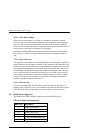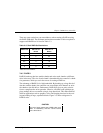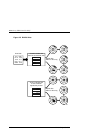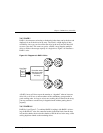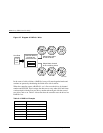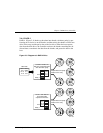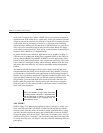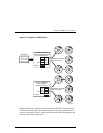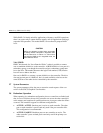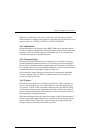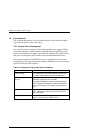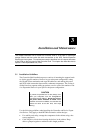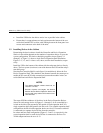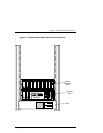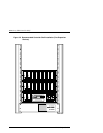
RAID Array 3000 Controller Shelf
2–16 EK–SMCPQ–UG. C01
While RAID 5 is ideally suited for applications with many, small I/O operations,
there is no reason why it cannot function equally well for applications with large,
sequential I/O operations. This makes RAID 5 an excellent all-purpose RAID
level.
CAUTION
RAID 5 can withstand a single failure and handle
I/O activity without interruption in degraded mode
until the failed drive is rebuilt. If a second drive
fails while the RAID set is in degraded mode, the
entire RAID set will fail.
2.6.6 JBOD
JBOD, which stands for “Just a Bunch of Disks”, makes it possible to connect
one or standalone disk drives to the controller. A JBOD disk drive is not part of a
redundancy group, even though the controller assigns a redundancy group num-
ber to the drive. This number becomes that logical unit number (LUN) that the
host will use to address the drive.
One use for JBOD is to connect a system disk drive to the controller. The drive
does not become part of a RAID set, but it is made available to the host on the
same SCSI bus as the other devices controlled by the controller.
2.7 System Parameters
The system parameters allow the user to customize certain aspects of the con-
troller via the SWCC Graphical User Interface.
2.8 Redundant Operation
When operating in a redundant configuration, the two controllers are linked such
that, in case of a failure, the surviving controller can access the other controller’s
cache memory and complete all operations that were in progress when the failure
occurred. The controllers support two different configurations:
•
ACTIVE / ACTIVE: One host port is active on each controller. The other
port on each controller is passive and only used if the peer controller fails.
This configuration is recommended.
•
ACTIVE / PASSIVE: Both host ports on one controller are active. The
other controller’s ports are both passive and only used if the primary con-
troller fails.



